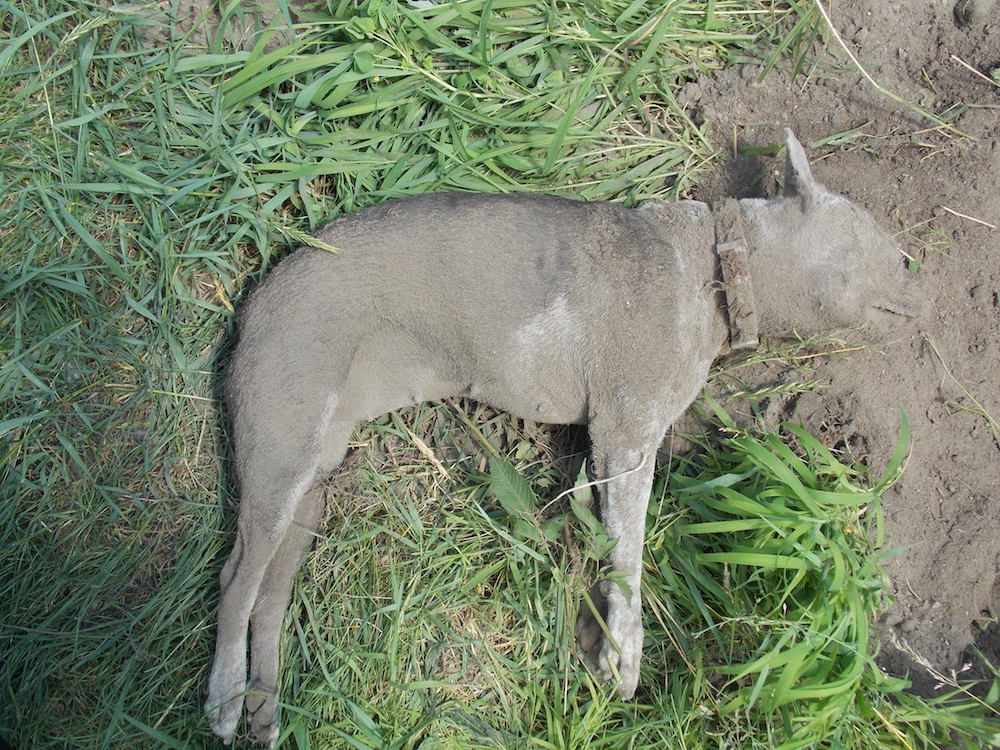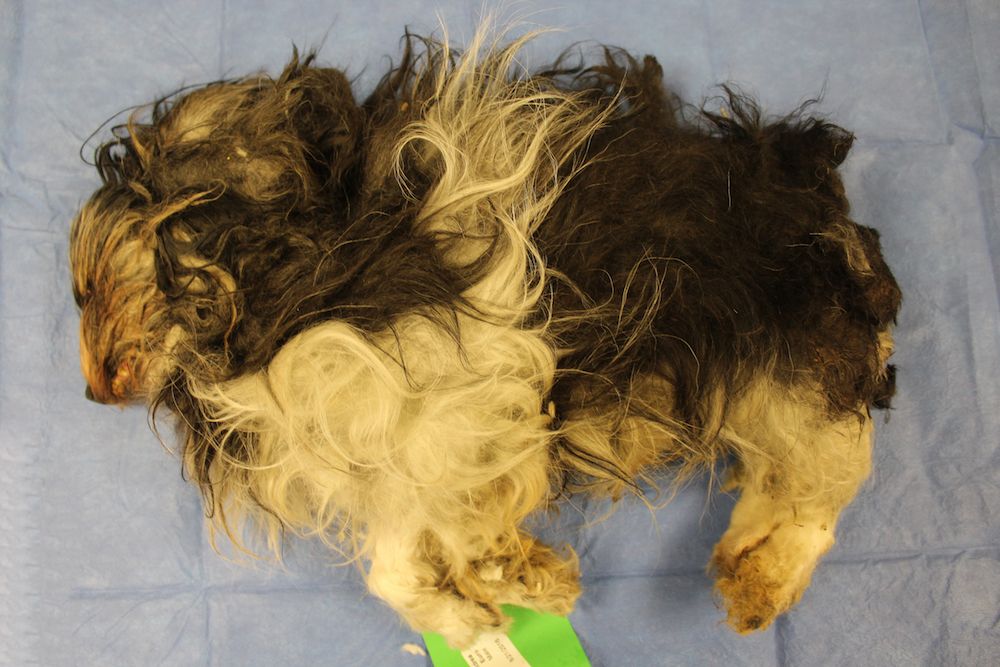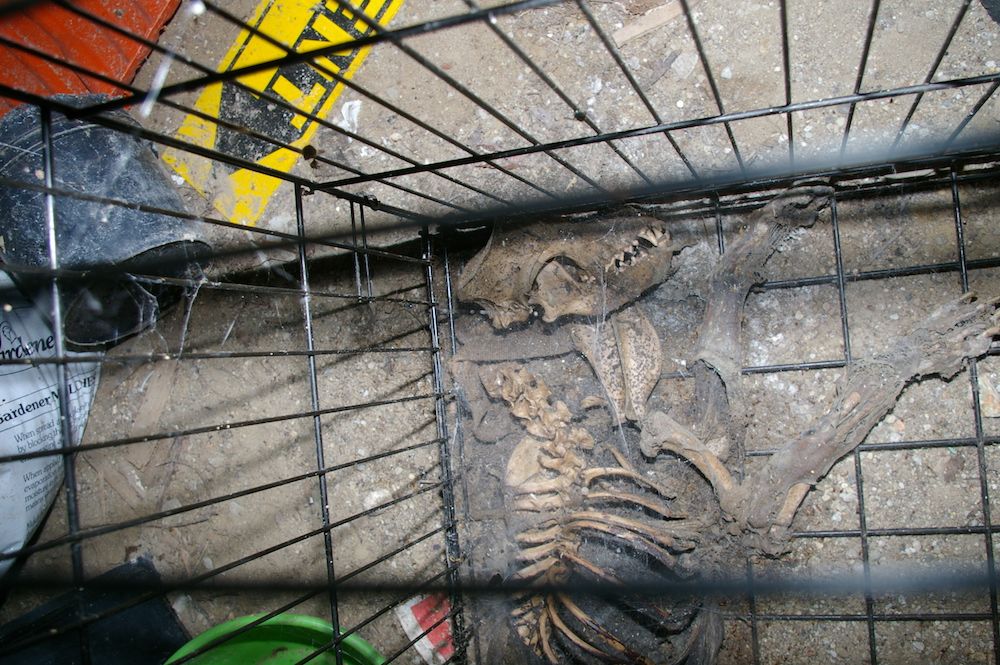AVMA 2017: How to Deal With Animal Neglect Cases
Veterinarians who suspect clients of mistreating their pets should tread lightly, gather and document evidence carefully, and collaborate with law enforcement.

According to Martha Smith-Blackmore, DVM, founder and president of Forensic Veterinary Investigations, LLC, in Boston, Massachusetts, and adjunct professor at Cummings School of Veterinary Medicine at Tufts University, animal neglect is the failure to provide adequate food, water, shelter (Figure 1), and veterinary care, to the extent that a reasonable and prudent animal owner should have known the animal needed. Typically, these cases involve passive maltreatment that represents acts or crimes of omission, she said.
Presenting at the 2017 American Veterinary Medical Association Convention in Indianapolis, Indiana, Dr. Smith-Blackmore discussed the role of the veterinarian in dealing with cases of animal neglect.
RELATED:
- New Research May Help Veterinarians Distinguish Between Accidental Injury and Animal Abuse
- Veterinarians: Protecting Pets and People from Abuse
A Collaborative Effort
Dr. Smith-Blackmore emphasized that effective management of animal neglect cases requires collaboration among veterinarians, law enforcement officers, and prosecutors.

Figure 1. This young Boston terrier was exhumed after a neighbor reported concerns of a heatstroke death. Although many cases of heatstroke are unintentional, analogous to drunk driving “accidents,” there is still criminal responsibility.
She explained that veterinarians play a key role in recognizing and reporting cases of obvious or suspected animal neglect. This may require veterinarians to participate in crime scene investigations, perform diagnostic testing (such as laboratory work and radiography), interpret findings (including those from photographs), and ultimately provide opinions on what factors either did or did not contribute to an animal’s condition.
In contrast, law enforcement officers are responsible for investigating these cases, which may involve obtaining search warrants for an owner’s home and conducting interviews with an owner. Prosecutors will also advise on what charges might be applicable.
Reporting Suspicions of Animal Neglect
In an interview with American Veterinarian®, Dr. Smith-Blackmore provided pointers for veterinarians who need to report suspicions of animal neglect to law enforcement. If the officer taking the report is less than responsive, the veterinarian should call the agency directly and ask to speak with a detective, she advised. For example, “If an animal control officer doesn’t see a problem where you do, call the sheriff’s department,” she said. “If local law enforcement is less than thorough, call the prosecutor’s office. There is always someone, somewhere, who has the ability and interest to help launch an investigation into your concerns.”
Dr. Smith-Blackmore told American Veterinarian® that “when a veterinarian suspects animal maltreatment and reports that suspicion to the appropriate authorities, he or she has contributed one important piece to the justice puzzle. The investigation and potential prosecution that follow are where criminal responsibility is decided.”
However, she also noted the uneven response across the country to allegations of animal abuse. Although “some jurisdictions are well prepared and will respond appropriately, other places may have departments or individuals who fail to respond with appropriate interest and vigor,” she said. “But as long as we veterinarians are reporting our suspicions and expecting appropriate responses, we are fulfilling our responsibility to animal health and welfare. The veterinarian who fails to advocate for his or her patient is a gatekeeper, preventing an appropriate response.”
She also discussed cases in which veterinarians might encounter “borderline care” of animals. In these instances, it is appropriate to exercise the due diligence of educating the client and giving the client the opportunity to improve an animal’s condition, she said. “Set reasonable deadlines for improvement, and document those expectations in the medical record. If the client then fails to show up for a recheck appointment, or if the animal is no better off at recheck, a report of suspected animal cruelty can be made,” she said.
The Clinical Examination
Focusing on starvation as 1 form of neglect, Dr. Smith-Blackmore stressed the need for veterinarians to perform a thorough clinical or postmortem examination

Figure 2. Findings in heavily matted dogs may include limited range of limb motion due to the mats, strangulation injury of the extremities, and severe underlying dermatitis. In addition, heavy mats may prevent immediate recognition of poor body condition in these animals.
on any animal that they suspect has been abused.
When documenting their findings, veterinarians should include subjective observations (eg, the smell of the animal, the texture of its fur) and objective findings (eg, the animal’s weight, results of diagnostic tests), as well as observations about the severity and duration of any injuries (Figure 2).
Dr. Smith-Blackmore discussed some tools that veterinarians may find useful when recording their clinical examination findings. For example, body condition charts can help veterinarians document an animal’s body condition score.1,2 The Tufts Animal Care and Condition Scoring System3 also provides language for assessing body condition, as well as for physical care and weather and environmental safety. Muscle condition score charts are also available from the World Small Animal Veterinary Association, she said.4,5
Look for Evidence of Starvation
Hypoalbuminemia is a common finding in animals that have suffered starvation, Dr. Smith-Blackmore said. Other common findings include an elevated blood urea nitrogen (BUN) level, as a result of protein catabolism, as well as an elevated BUN:creatinine ratio. Additionally, a complete blood count may reveal findings such as anemia and low white blood cell count, she said. If the animal has demonstrated pica, the veterinarian should note this in the report because it indicates that the animal had an interest in eating, thus reducing the likelihood that inappetence led to emaciation.
Rule Out Medical Causes of Emaciation
However, Dr. Smith-Blackmore advised that when dealing with animals that are suspected to have been starved, veterinarians should nevertheless be careful to rule out underlying medical conditions that could have produced significant weight loss despite adequate nutrition. These include conditions such as cancer, protein-losing nephropathy, exocrine pancreatic insufficiency, and severe intestinal parasitism, she said.
Choose Language Carefully
Dr. Smith-Blackmore emphasized the need for veterinarians to think carefully about the language they use when recording clinical findings in a written report because this can have important implications during any future prosecution stage.

Figure 3. When animals are deliberately denied access to food and water, the act may be termed starvation abuse as opposed to neglect.
For example, she advised veterinarians to avoid using the term neglect when describing or interpreting any findings from a case involving an emaciated animal. Use of this term in a report could prevent prosecutors from charging a severe case of animal neglect as a felony, she explained. Instead, Dr. Smith-Blackmore suggested that veterinarians should use the term starvation abuse in these cases (Figure 3).
Animal Abuse as a Social Issue
Dr. Smith-Blackmore discussed several cases, some of which also highlighted animal abuse as an important social issue with implications that extend beyond the effect on the animal. The veterinarian’s role in recognizing and reporting animal abuse is especially important because of the well-documented link between animal abuse and human violence and other forms of community violence.6,7
In addition to neglect resulting from an individual’s lack of empathy, she added that animal abuse sometimes results from an owner’s mental health issues, as in cases of animal hoarding, for instance. These scenarios can be extremely complex, she said, with various potential underlying issues. She discussed case examples such as the overwhelmed caregiver hoarder (who passively acquires an excessive number of animals), the rescue hoarder (who takes in abandoned, abused, and stray pets and often eventually suffers extreme compassion fatigue), and the greed-driven hoarder (who acquires animals purely for financial gain).
In these cases, as well as in other instances, when evidence may be insufficient to file charges, for example, Dr. Smith-Blackmore stressed that a restorative justice approach can often help both the people and animals involved. In contrast to more punitive approaches in which the main aim is retribution, restorative justice considers crime and wrongdoing to be an offense against an individual or community rather than the state, she said. This approach still holds offenders accountable, but the response focuses on healing rather than punishing.
Dr. Smith-Blackmore discussed using the Benchmark Animal Rehabilitative Curriculum in these cases.8 This court-ordered online course is designed to create positive change in the attitudes and actions of people who have mistreated animals and to reduce the likelihood that they will reoffend.
Because this course educates individuals about animal cruelty, animals’ basic needs, and responsible pet ownership, she noted, participation prevents individuals from claiming ignorance about these topics if they reoffend.
Advancing Efforts to Increase Reporting of Animal Abuse
Overall, Dr. Smith-Blackmore emphasized the need for veterinarians to act on cases of suspected animal neglect or abuse. “When veterinarians decide not to report their suspicions, they have acted as investigator, judge, and jury—potentially condemning that animal or scores of animals to a lifetime of suffering,” she said.
An increasing number of publications in the medical literature about childhood injuries related to abuse played an important role in bringing child abuse to national attention in the 1960s. This ultimately contributed to most states having mandatory child abuse reporting laws by the 1970s. Reflecting on this, Dr. Smith-Blackmore noted that with respect to reporting of suspicions of animal abuse, veterinarians are currently in a similar position to that of pediatricians in the 1970s who were faced with reporting suspicions of child abuse.
Nevertheless, she stressed that mandated reporting of suspicions of animal abuse, with good faith reporting immunity, is needed across the United States. “This, along with universal training in veterinary schools on recognizing signs of criminal harm to animals and how to report them, will create the same change in veterinary medicine,” she concluded.
Dr. Parry, a board-certified veterinary pathologist, graduated from the University of Liverpool in 1997. After 13 years in academia, she founded Midwest Veterinary Pathology, LLC, where she now works as a private consultant. Dr. Parry writes regularly for veterinary organizations and publications.
References:
- World Small Animal Veterinary Association Global Nutrition Committee. Body condition score: cats. wsava.org/sites/default/files/Body%20condition%20score%20chart%20cats.pdf. Published 2013. Accessed December 13, 2017.
- World Small Animal Veterinary Association Global Nutrition Committee. Body condition score: dogs. wsava.org/sites/default/files/Body%20condition%20score%20chart%20dogs.pdf. Published 2013. Accessed December 13, 2017.
- Tufts Animal Care and Condition (TACC) scales for assessing body condition, weather and environmental safety, and physical care in dogs. Tufts University website. vet.tufts.edu/wp-content/uploads/tacc.pdf. Accessed December 13, 2017.
- World Small Animal Veterinary Association Global Nutrition Committee. Muscle condition score: cats. wsava.org/sites/default/files/Muscle%20condition%20score%20chart-Cats.pdf. Published 2014. Accessed December 13, 2017.
- World Small Animal Veterinary Association Global Nutrition Committee. Muscle condition score: dogs. wsava.org/sites/default/files/Muscle%20condition%20score%20chart-Cats.pdf. Published 2014. Accessed December 13, 2017.
- The link between animal abuse and domestic violence. Vet Money Dig. 2017;1(5):4.
- Strand EB. The link between human and animal violence [video]. Vet Money Dig. vmdtoday.com/videos/the-link-between-human-and-animal-violence. Published June 15, 2017. Accessed December 5, 2017.
- About B.A.R.C. Benchmark Animal Rehabilitative Curriculum website. barceducation.org/about-barc. Accessed December 5, 2017.
